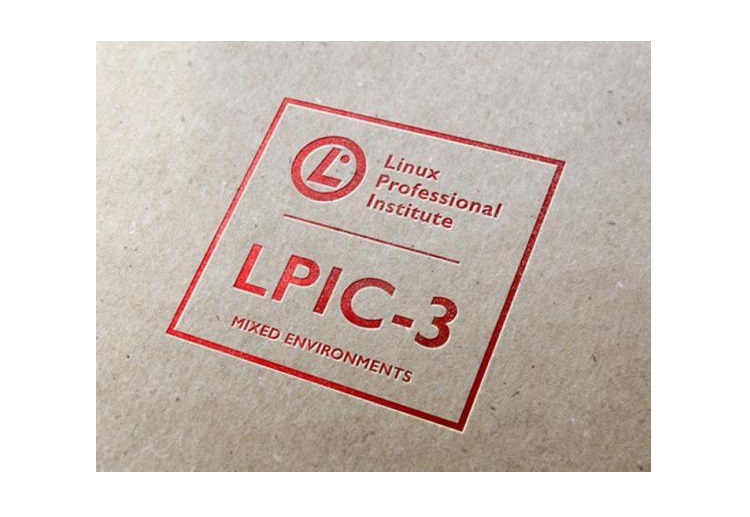Introduction
LPIC-3 is the highest level of certification offered by the Linux Professional Institute (LPI). It is designed for Linux professionals who have a deep understanding of Linux systems and are able to manage enterprise-level Linux systems.
Obtaining LPIC-3 certification demonstrates a high level of expertise in Linux system administration, and it can help you stand out in a competitive job market.
What is LPIC-3 Certification?
LPIC-3 certification is an advanced-level certification for Linux professionals. It validates a candidate's ability to manage and administer large-scale Linux systems, including enterprise-level systems. LPIC-3 certification covers three different specialties, or "concentrations":
1. LPIC-3 300: Mixed Environment
2. LPIC-3 303: Security
3. LPIC-3 304: Virtualization and High Availability
Candidates can choose to specialize in one or more of these concentrations. Each concentration has its own exam, and passing all three exams earns the candidate the LPIC-3 certification.
Benefits of LPIC-3 Certification
LPIC-3 certification is highly regarded in the Linux community and is recognized by employers around the world. Some of the benefits of obtaining LPIC-3 certification include:
◉ Demonstrating advanced-level Linux system administration skills
◉ Enhancing career prospects and earning potential
◉ Validating knowledge of enterprise-level Linux systems
◉ Demonstrating commitment to ongoing professional development
◉ Building credibility and gaining recognition within the Linux community
LPIC-3 Exam Details
Exam Objectives
Each LPIC-3 exam covers a specific set of objectives. The objectives for each concentration are as follows:
1. LPIC-3 300: Mixed Environment
This concentration focuses on Linux systems in a mixed environment, including integration with Windows and other non-Linux systems.
2. LPIC-3 303: Security
This concentration focuses on Linux system security, including authentication, encryption, and network security.
3. LPIC-3 304: Virtualization and High Availability
This concentration focuses on virtualization and high availability technologies, including virtualization with KVM and Xen, as well as clustering and high availability solutions.
Exam Format and Duration
Each LPIC-3 exam consists of 60 multiple-choice and fill-in-the-blank questions. The exams are computer-based and have a duration of 90 minutes. The passing score for each exam is 500 out of 800.
Exam Prerequisites
Candidates must have an active LPIC-2 certification to be eligible to take an LPIC-3 exam.
Exam Registration and Fees
LPIC-3 exams can be taken at any Pearson VUE testing center worldwide. The cost of each exam varies by location but is typically around $200 USD.
Exam Preparation Tips
Preparing for an LPIC-3 exam requires a deep understanding of Linux systems and advanced-level skills in Linux system administration. Some tips for exam preparation include:
◉ Reviewing the exam objectives and ensuring a thorough understanding of each topic
◉ Gaining hands-on experience with Linux systems and technologies covered in the exam
◉ Studying relevant documentation and resources, such as the LPIC-3 Exam Prep books and LPI exam preparation resources
◉ Taking practice exams to familiarize yourself with the format and types of questions asked
Resources for Exam Preparation
LPI offers a range of resources to help candidates prepare for LPIC-3 exams. These include:
◉ LPIC-3 Exam Prep books: These comprehensive study guides cover all exam objectives for each concentration and provide hands-on exercises and practice exams.
◉ LPI exam preparation resources: LPI offers a range of free resources, including study guides, practice exams, and online courses, to help candidates prepare for exams.
◉ Third-party study materials: A range of third-party study materials, such as online courses and study guides, are available to help candidates prepare for LPIC-3 exams.
Renewal and Recertification
LPIC-3 certification is valid for five years. To renew LPIC-3 certification, candidates must either:
◉ Pass any higher-level LPIC certification exam (such as LPIC-4) within the five-year period
◉ Earn 60 Continuing Education Units (CEUs) within the five-year period through participation in approved training programs, conferences, and other professional development activities
LPIC-3 vs. Other Linux Certifications
LPIC-3 certification is one of several Linux certifications available to IT professionals. Some of the other popular Linux certifications include:
◉ Red Hat Certified Engineer (RHCE): This certification is offered by Red Hat and focuses on Red Hat Enterprise Linux system administration.
◉ CompTIA Linux+: This certification is vendor-neutral and covers foundational Linux skills and knowledge.
◉ SUSE Certified Engineer (SCE): This certification is offered by SUSE and focuses on SUSE Linux Enterprise Server administration.
While LPIC-3 certification is not specific to any particular Linux distribution, it is recognized by a range of employers and demonstrates advanced-level skills in Linux system administration.
LPIC-3 Job Opportunities
LPIC-3 certification can open up a range of job opportunities for Linux professionals. Some of the roles that may require or benefit from LPIC-3 certification include:
◉ Linux systems administrator
◉ DevOps engineer
◉ Cloud engineer
◉ Network administrator
◉ Security analyst
Conclusion
LPIC-3 certification is an advanced-level certification for Linux professionals that validates advanced-level skills in Linux system administration. Obtaining LPIC-3 certification can help Linux professionals stand out in a competitive job market and demonstrate expertise in managing enterprise-level Linux systems. With the right preparation and dedication, LPIC-3 certification can be a valuable asset for advancing your career in the IT industry.




0 comments:
Post a Comment